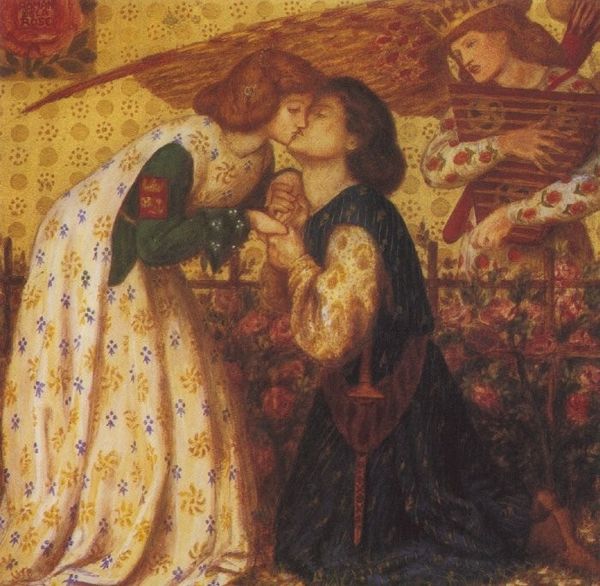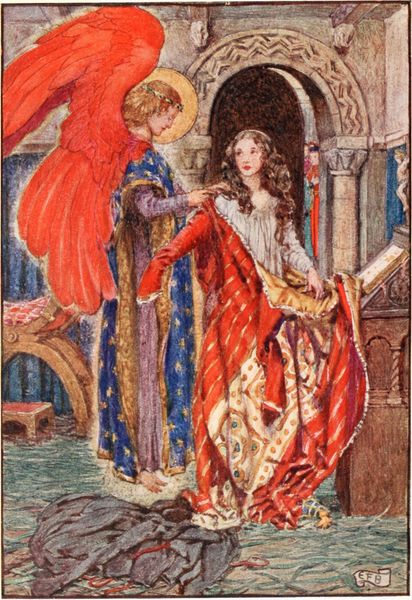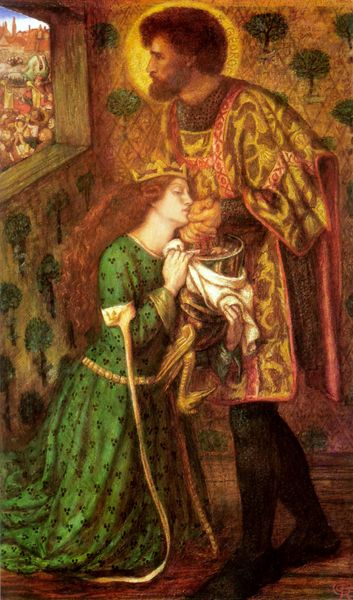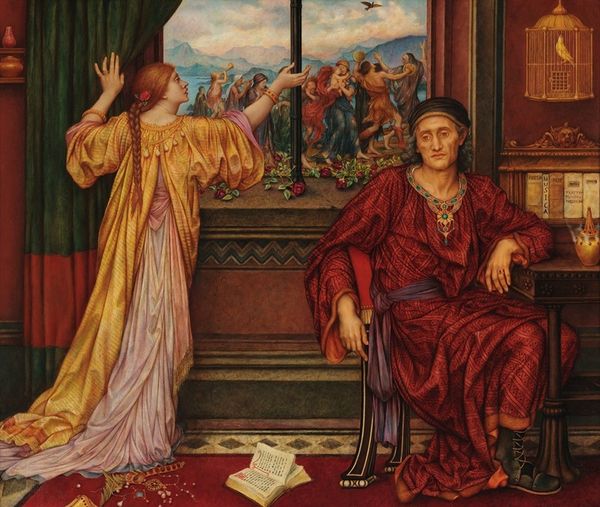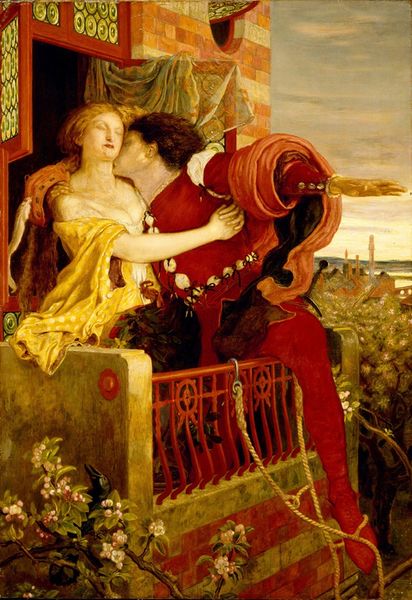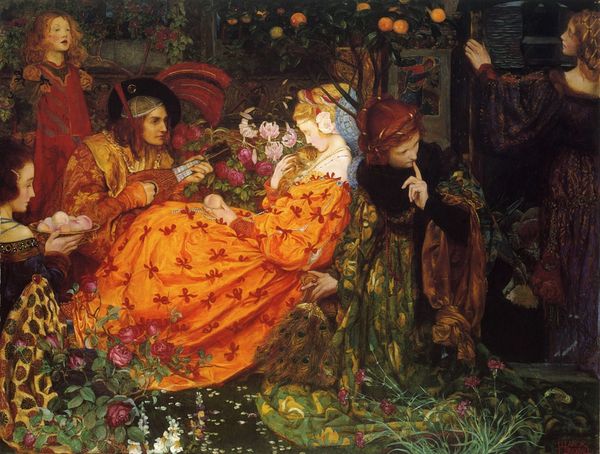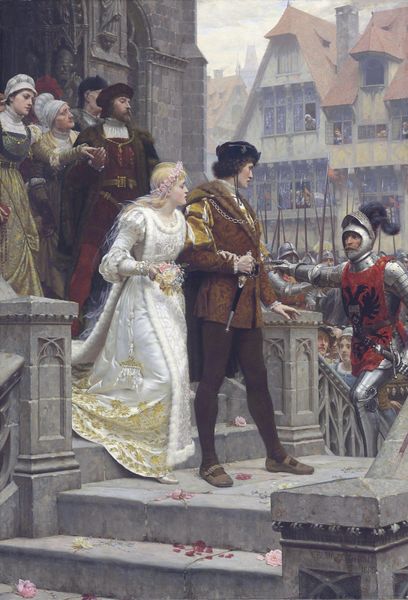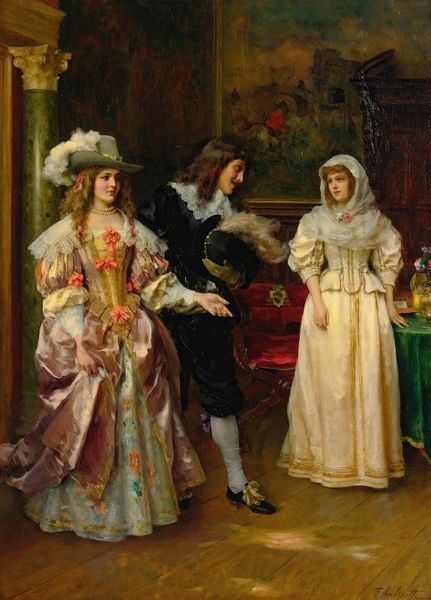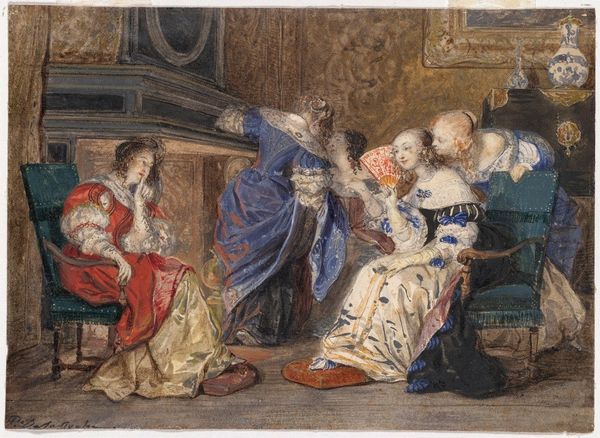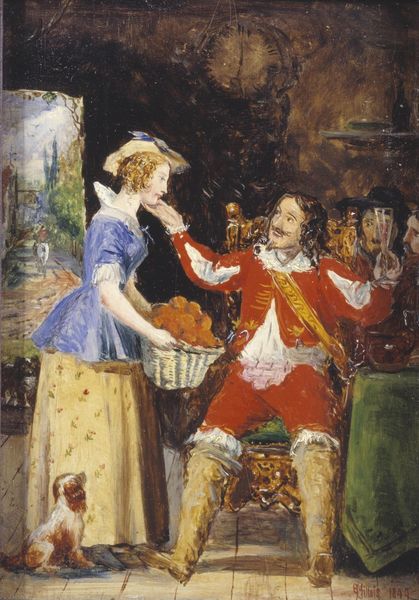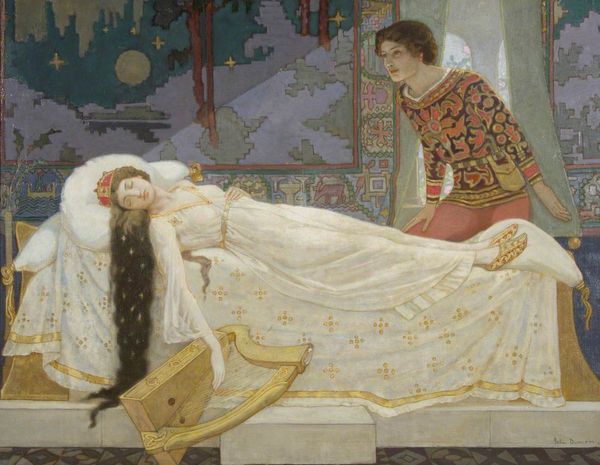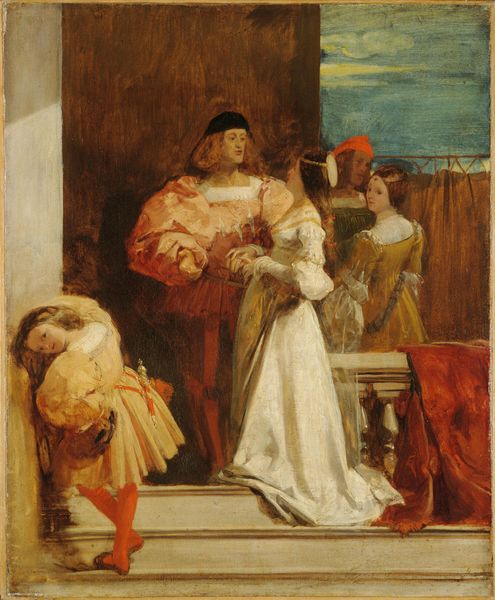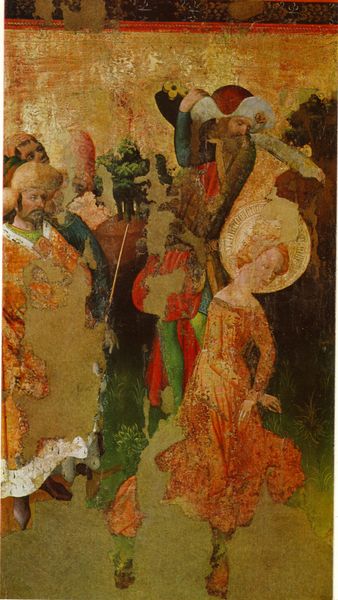
Dimensions: support: 276 x 186 mm
Copyright: CC-BY-NC-ND 4.0 DEED, Photo: Tate
Editor: So, here we have Ford Madox Brown’s *King René’s Honeymoon*. It feels so intimate, doesn't it? Like a stolen moment. All that detail, almost jewel-like. What strikes you most about this painting? Curator: It's a pre-Raphaelite daydream, isn't it? Notice how Brown blends the romantic medievalism with this almost photographic attention to detail. The symbols! His instruments represent his position as Duke of Anjou, while the text speaks to King Rene's other positions. You sense Brown wants us to see beyond the royal image, to imagine the human connection beneath. Editor: That makes me see it differently. I was caught up in the fairytale, I didn't consider the symbolism. I'm still stuck on how cute it is though. Curator: Exactly! And there you have it – the fairytale *and* the potent symbolism, coexisting like dreams and reality!
Comments
tate 5 months ago
⋮
http://www.tate.org.uk/art/artworks/brown-king-renes-honeymoon-n03229
Join the conversation
Join millions of artists and users on Artera today and experience the ultimate creative platform.
tate 5 months ago
⋮
This watercolour is a replica of the subject Brown painted to decorate a cabinet designed by John Pritchard Seddon, which was made by Morris, Marshall, Faulkner and Company, and is now in the Victoria and Albert Museum. At Brown's suggestion, the painted panels were based on imagined incidents in the honeymoon of King Rene of Anjou, as recounted by Walter Scott in his novel 'Anna von Geierstein'. The four panels on the front of the cabinet illustrate King Rene's renowned interest in the arts. Brown chose to evoke Architecture, showing the King considering the plans for his castle. The other three panels were painted by Rossetti (Music) and Burne-Jones (Painting and Sculpture). Gallery label, September 2004
